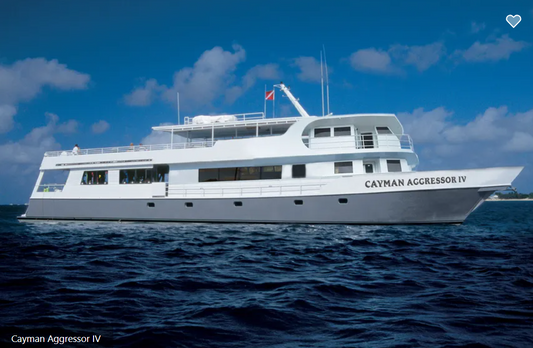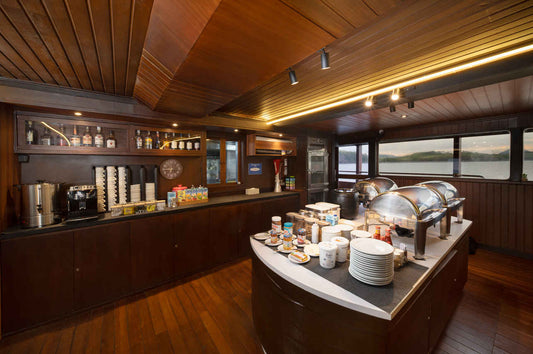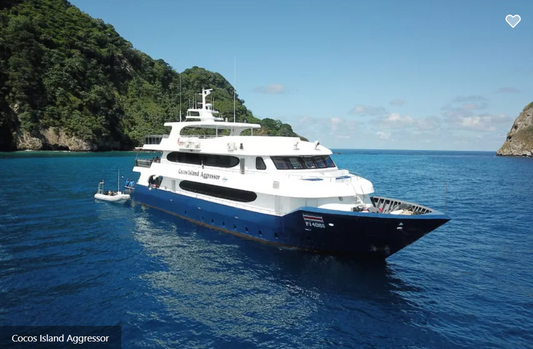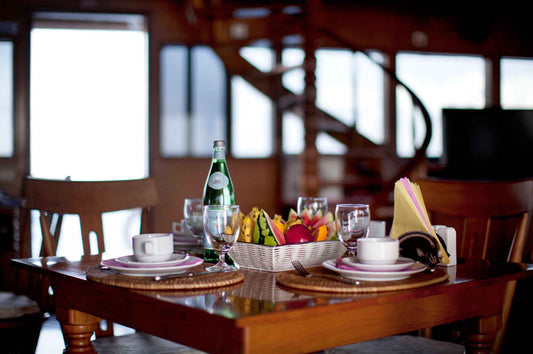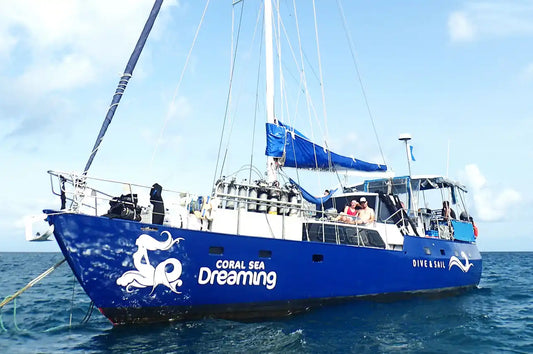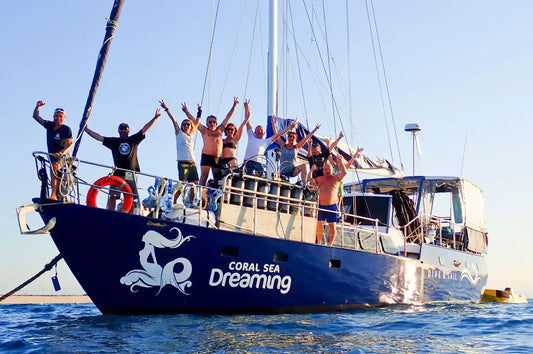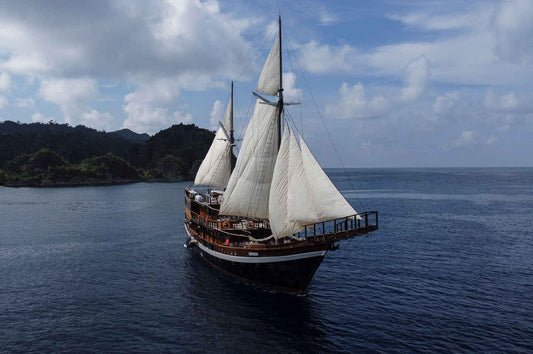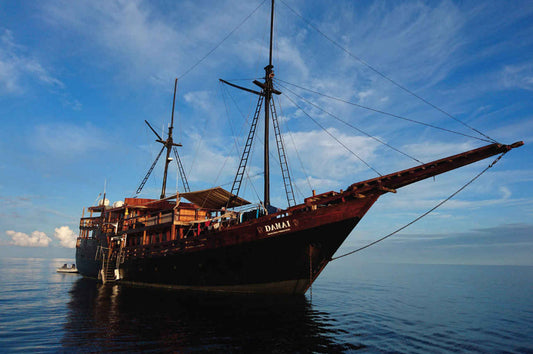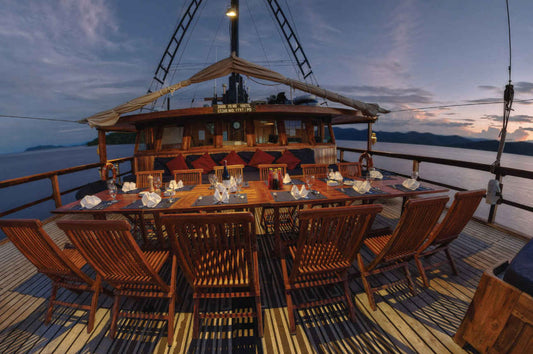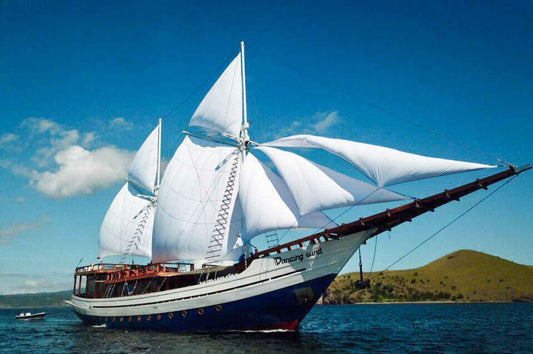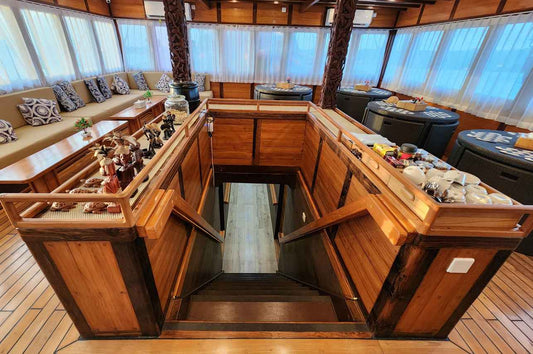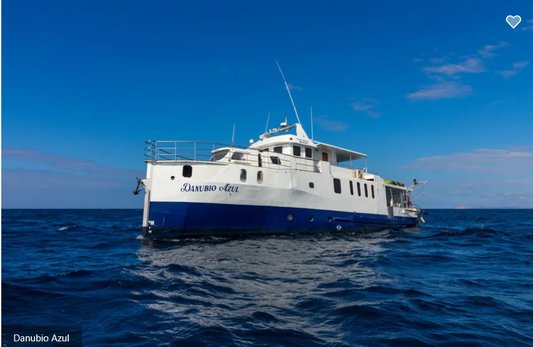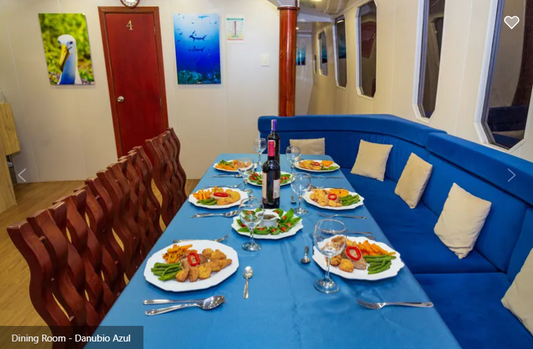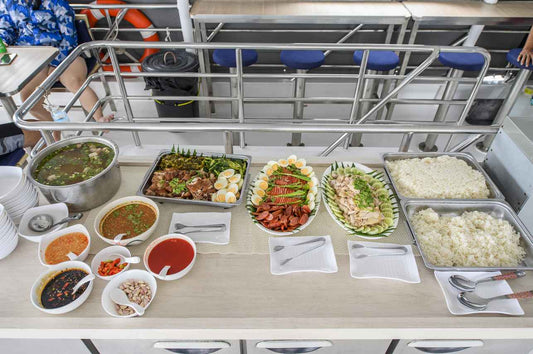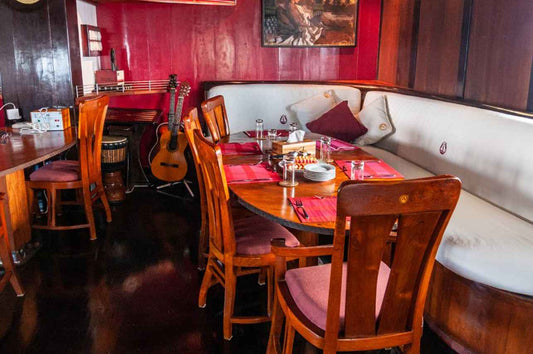Dive Liveaboards That Offer Scuba Gear Rental Onboard
Why choose a dive liveaboard with scuba rental gear onboard?
If you prefer to travel light and not take your own scuba gear, being able to rent the kit onbard is an advantage. When the boat carries quality rental kit you can skip the heavy bags, avoid airline fees, and still dive with safe well maintained equipment.
Have rental gear onboard is also handy if you don't have your own dive kit, which might mean you're new to diving and yet to decide on what kit to buy.
What rental gear is usually offered on board?
Most liveaboards can supply a full set of scuba equipment. This means they will have the following dive equipment onboard for hire:
- Your buoyancy control device (or BCD).
- Regulators with alternate air source and pressure gauge.
- Wetsuit.
- Fins, mask and snorkel.
- Weights and wegiht belt.
- Dive computer.
- Some boats also rent torches, surface marker buoys, and reef hooks where necessary and legal.
Cylinders are almost always yoke. If you use DIN, ask for an insert or bring a simple adapter so you can attach your own regulator without fuss.
How do you make sure the sizes of the scuba gear will fit you?
Tell the operator your height, weight, shoe size, and usual wetsuit size when you book. Add any helpful notes such as I have broad shoulders or I prefer short fins.
Good crews lay out two size options for key items so you can choose the best fit at check in. Try everything on before sailing and do a quick test breath on the reg while the tank is open to check for smooth airflow.
Is scuba rental gear clean and well maintained?
Reputable dive boats follow strict cleaning and service routines for all their diving equipment. Regulators are serviced on a schedule, BCD inflators are checked, and wetsuits, boots, and masks are disinfected and dried between trips.
If something looks worn or does not feel right, speak up. Crews carry spares and would rather swap an item than have you worry about it.
What does it cost to rent a full set of scuba gear?
Prices of scuba gear rental on dive boats will vary by region and dive boat. Many boats offer a daily rate for a full set and a menu for single items such as a computer or torch.
If you are doing a long trip, check whether a weekly cap applies. Confirm whether nitrox compatible regulators are included if you plan to dive using nitrox.
Can you rent only the bits of diving equipment you do not own?
Yes. Many divers bring a personal mask, snorkel and fins, a dive computer, and a camera, then rent the bulky pieces like BCD, regs, and wetsuit.
This keeps baggage simple while you still enjoy familiar items. The sweet spot is to travel with the essentials that must fit your face and feet and rent the rest.
How do you check scuba rental gear on day one?
Do a calm buddy check with the crew nearby. For the regulator, breathe from both the primary and the alternate while watching the needle for smooth pressure.
For the BCD, inflate fully, listen for leaks, and ensure all dumps work. Check that clips and cummerbunds sit comfortably and that the tank band bites firmly. For the computer, set the units you prefer and confirm the battery level. A tidy five minute check saves a world of faff later.
What about wetsuit thickness and comfort?
Ask what thickness of wetsuit suit the season requires. Many tropical trips use three millimetre wetsuits, whereas some regions suggest five millimetres or even a drysuit for cooler temperatures. But you will need to have had specific drysuit training to dive in a drysuit.
If you feel the cold, consider a hooded vest for extra warmth. Try the wetsuit on dry and check that you can squat, stretch, and reach your valves if needed. A wetsuit that is a little snug is fine once wet, but it should not restrict your breathing.
Will rental fins and masks be good enough for photos and careful diving?
Yes if they fit. A simple low volume mask that seals well on your face beats any fancy lens that leaks. For fins, a medium stiffness is ideal for relaxed control on reefs and in small currents.
If the first mask or fin set does not feel right, ask to try another pair. The goal is comfort and easy control so you can focus on the dive.
Can you still take scuba diving courses if you're using rental gear?
Of course. Boats that teach scuba diving courses keep a range of sizes and have extra kit for specialties like night or wreck.
For nitrox you only need a computer that can be set to the correct mix, which rental computers will do. But you will need to have your Enriched Air Nitrox card to dive with nitrox.
For photography, many guests rent the core scuba kit and bring their own camera housing.
Any tips to keep rental gear safe and tidy on deck?
Use the crate or station assigned to you and keep everything in the same place. Rinse regulators and computers gently in the camera safe rinse if allowed or use the general rinse with care.
Do not leave wetsuits in a heap. Hang them so they dry between dives. Tell the crew early if something feels off so they can fix or swap it before the next briefing.
Final tip before you choose your dive liveaboard
If you want an easy travel day and a smooth week, pick a liveaboard that offers reliable gear rental.
Share your sizes early, try everything on at check in, and do a careful first buddy check. With comfortable kit and friendly crew support you will spend less time sorting equipment and more time enjoying the blue.

